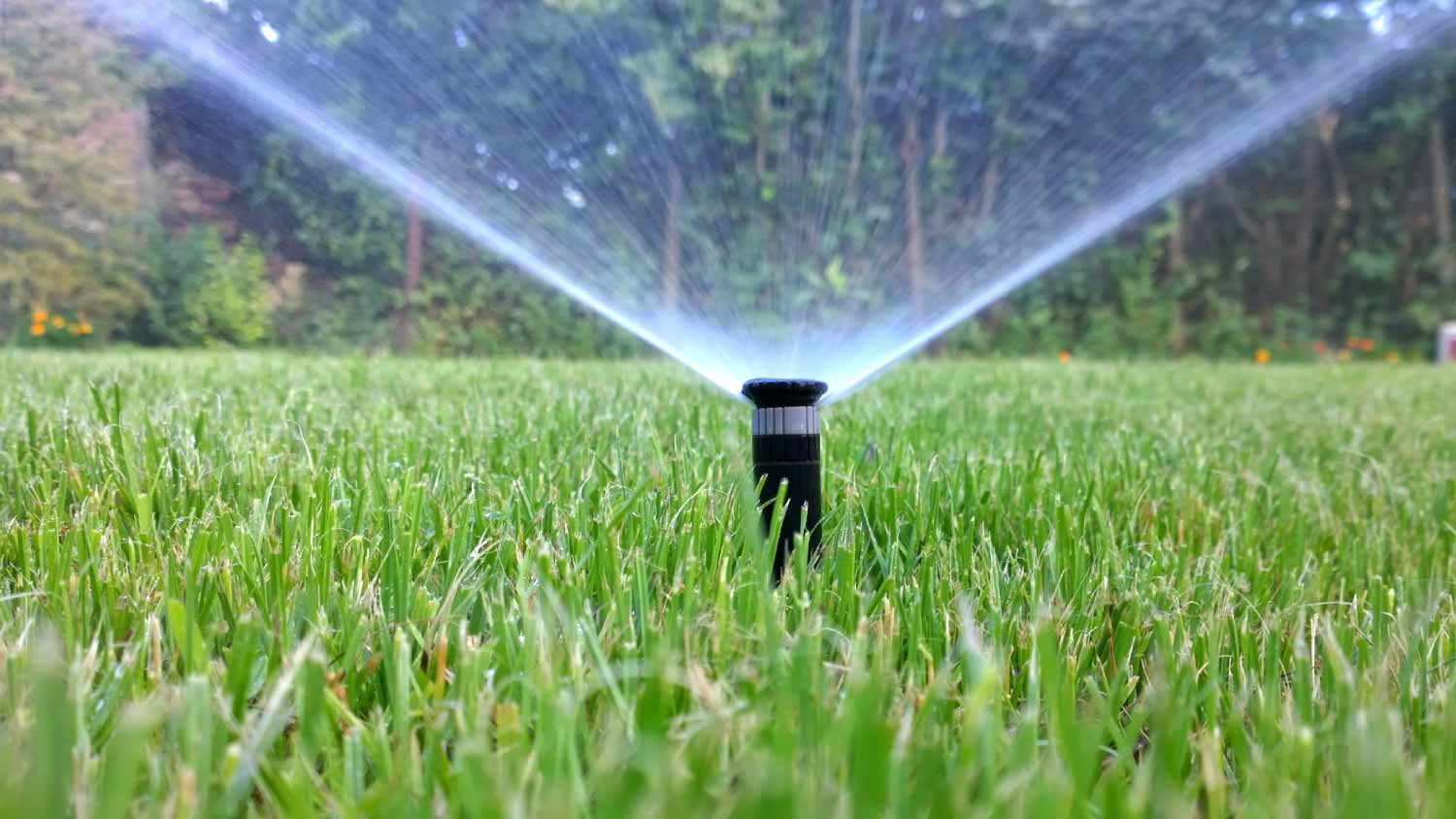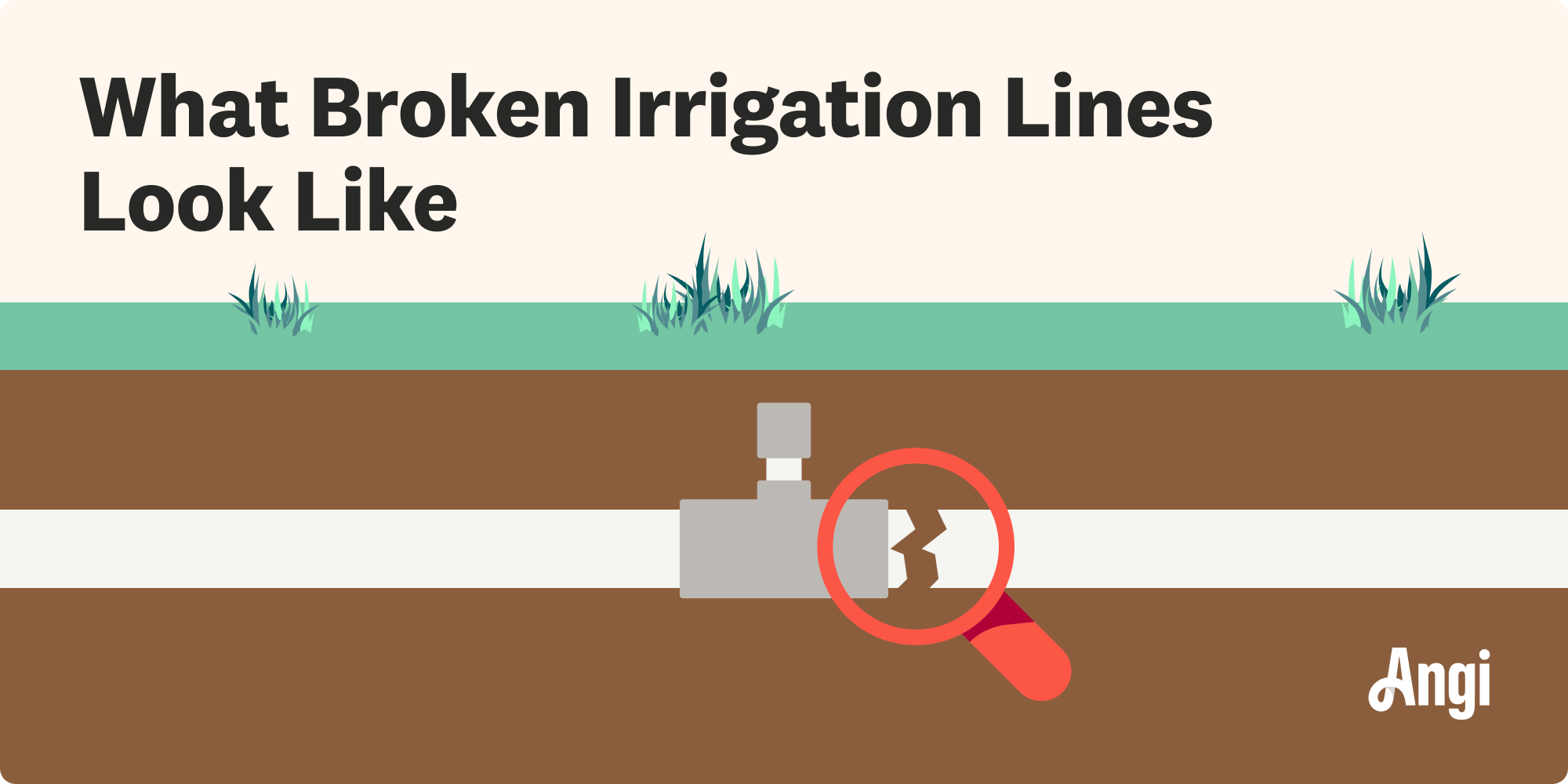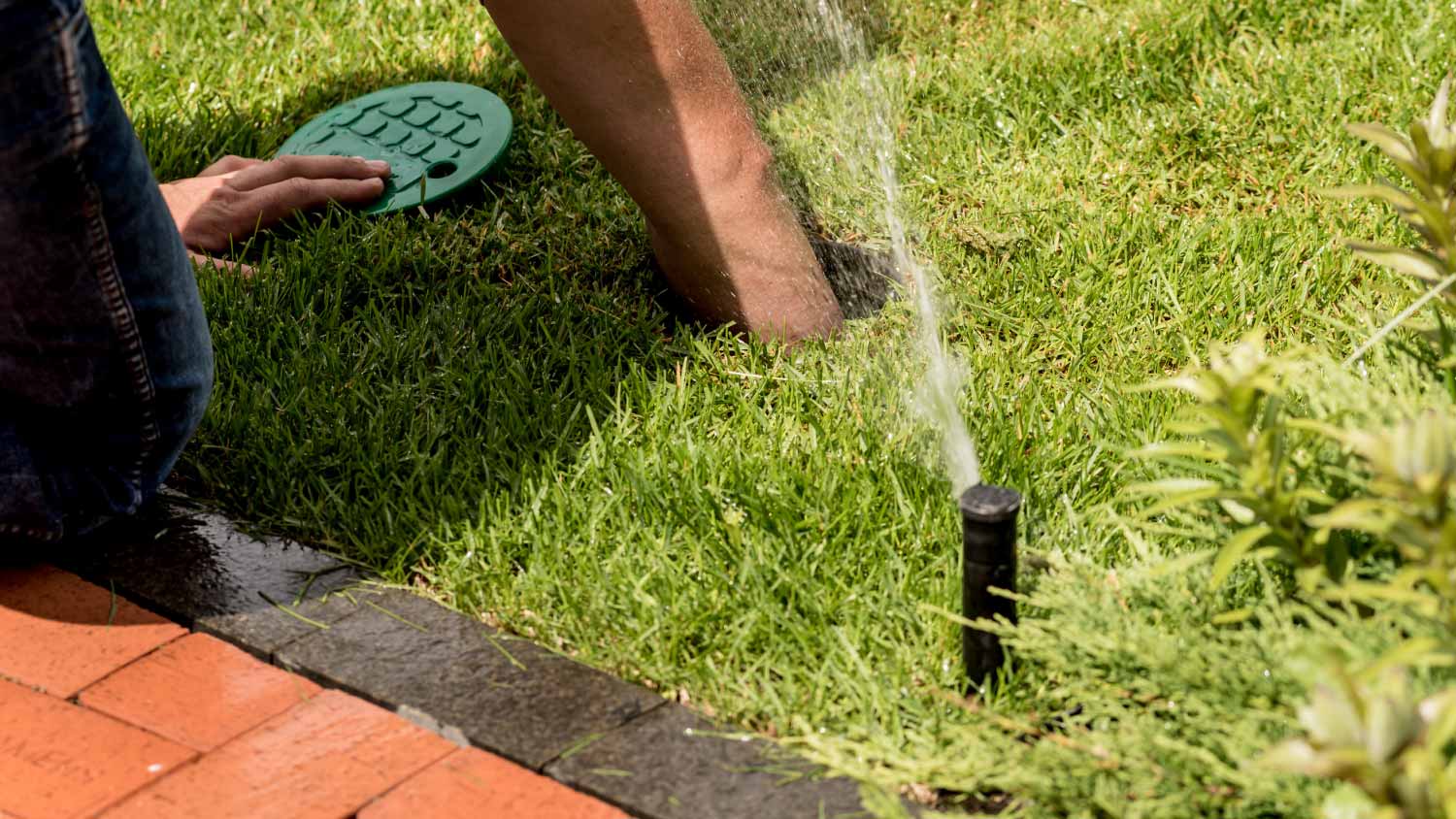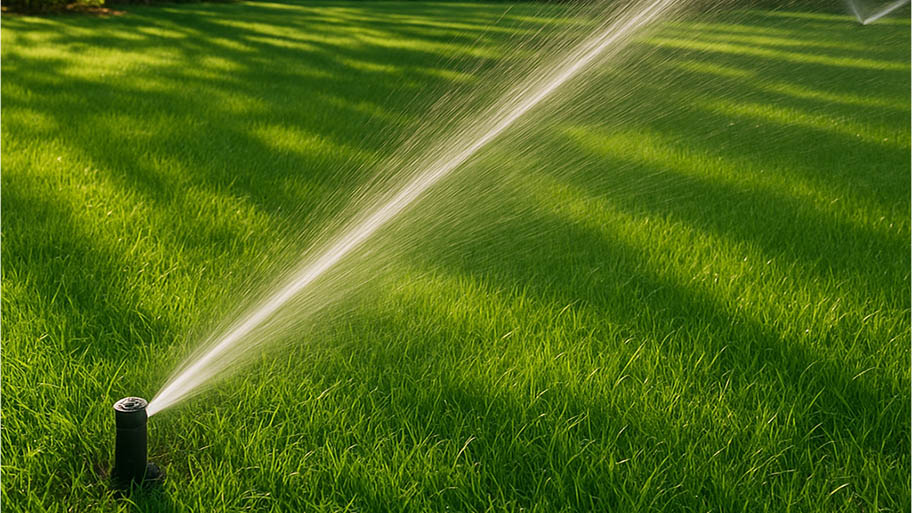
Discover drip irrigation system cost estimates, key price factors, and ways to save. Get transparent pricing to plan your home irrigation project confidently.
If your sprinkler is leaky, the cause may be sneaky


Two common reasons for sprinkler leaks are faulty sprinkler valves and sprinkler heads.
Clogged or broken pipes can cause pressure imbalances, resulting in system leaks.
Low-head drainage can result in leaks due to sloped terrain.
Most fixes involve replacing broken parts or the entire sprinkler system.
Sprinkler systems are designed to keep your lawn healthy by providing just the right amount of water. However, a sprinkler system leak can cause excess water to harm your lawn’s health while also increasing your water bill. That’s why it’s vital to immediately detect and fix a leaking sprinkler system. Here are five common reasons why your sprinkler system is leaking along with solutions to attempt with the help of a sprinkler repair pro.
Don't neglect your sprinkler system maintenance, such as annual cleanings and inspections. These upkeep tasks can help prevent costly issues like clogged pumps and leaking pipes.

Sprinkler valves are an integral part of your irrigation system because they control the flow of water as it’s distributed to various parts of your lawn. So, malfunctioning valves could very well be the culprit for a leaky sprinkler system.
Thoroughly assess your sprinkler valves to make sure they’re in working order. If your sprinkler valves are wet, inspect further for loose wires, dirty valves, and worn out parts. Any one of these valve issues may be causing the leak.
To fix a faulty sprinkler valve, you’ll need to identify and resolve the specific issue. The solution may be as simple as cleaning your valves, but more serious issues could require replacing damaged parts or replacing the entire system.
When your sprinkler system is on, you expect for water to come out. But if water is still spewing from the sprinkler head once your system is off, there’s an underlying issue at play. Sprinkler heads can malfunction due to old age, heavy foot traffic, run-ins with lawnmowers, or even manufacturing errors.
Whatever the cause, fixing a sprinkler head leak often requires replacing broken parts within the head or replacing the entire unit. First, you’ll need a shovel to dig around the area, which will allow you to access the entire sprinkler head.
Unthread the riser from the pipe, and replace it if it’s broken. You may need pliers to separate the sprinkler head from the riser. Wrap the threads of the new sprinkler head with plumber’s tape before you reattach everything, and flush the line to make sure it’s working properly.
With the know-how and the right tools, a DIY sprinkler head job can take four to six hours.
The condition of your sprinkler pipes plays a vital role in how water distributes throughout your irrigation system. If pipes become clogged with vegetative debris, water flow can become restricted and impact water pressure. An increase of pressure can cause leaking.
For minor clogs, cleaning out your sprinkler pipes may stop the leaking. Severe blockages might require removing the pipes before you can clean them. In other cases, clogged pipes may be unsalvageable and need to be replaced altogether. If you suspect a severe clog in your sprinkler system, don’t hesitate to hire a local sprinkler repair professional to resolve the problem.
Begin by digging around the sprinkler heads to clear dirt away, and then unscrew the heads. You can work zone by zone. Next, turn the water on and flush the system until the water runs freely.
You can also clear a clog using compressed air. Start by turning off the water supply, draining the system, and closing the valves on the backflow preventer. Power up the air compressor and set the PSI to at least 40, but no more than 50 if you have polyethylene piping or 80 for PVC pipes. Connect the compressor and blow air through the sprinkler system zone by zone. When you’re finished, disconnect the compressor and reset the backflow valves and water supply.
It’s easy to make a mistake with method two, so consider calling a sprinkler repair pro to blow out your lines for you.

Like a clogged pipe, a cracked or broken pipe causes pressure imbalances and negatively affects how water flows through the sprinkler system. Abnormal amounts of pressure can cause leaks. Flooding, unusual plant growth, or darker-colored grass around a sprinkler head are indicators of busted pipes.
To fix cracked or broken pipes, you’ll need to identify which pipes are broken, dig up the broken line, and then replace it. This process is best handled by a sprinkler repair professional because trial and error from an inexperienced homeowner can lead to serious damage. Once replaced, turn your system back on and check for leaks.
Low-head drainage is the result of a sprinkler system being installed on sloped terrain. True to its name, when a sprinkler system is shut off, water leaks out of the lowest sprinkler heads and is replaced with air. To detect a low-head drainage, turn your sprinkler system on and inspect whether a large amount of air comes out. If so, the cause of the leak is low-head drainage, not faulty valves.
Fixing low-head drainage calls for special check valves that stop water from flowing out of the lowest head sprinklers once the irrigation cycle ends. Installing a check valve will fix the leaking if low-head drainage is to blame.
You’ll need to install a standalone check valve on each sprinkler head if they don’t already have one. That entails unthreading the sprinkler head, attaching the valve to the riser, and then reinstalling the sprinkler head.
Most new sprinkler heads these days have a check valve already integrated, so replace the entire head instead if there’s an issue. Make sure you have a wrench and plumber’s tape on hand. You may need a pipe cutter, too. Depending on the check valve, you can use a flat-head screwdriver or a special valve key to adjust the valve.

The signs that you have a sprinkler system leak may not be obvious at first. If you spot any of the following, take a closer look at your sprinkler system:
Soggy lawn areas that never seem to dry out
Puddles or flooded areas
Excessive mold or fungus growth
Uneven lawn growth and color
Dirty water coming out of your sprinkler heads
Sprinkler heads that don’t spray properly
Runoff collecting on your sidewalk or driveway
Low water pressure
Higher-than-normal water bills
Although you can repair many common sprinkler problems yourself, sometimes it’s better to call a professional. If you’re uncomfortable doing your own plumbing work or you want to avoid making a mistake that could damage your sprinkler system, call a sprinkler repair pro near you.
From average costs to expert advice, get all the answers you need to get your job done.

Discover drip irrigation system cost estimates, key price factors, and ways to save. Get transparent pricing to plan your home irrigation project confidently.

Discover the cost to winterize a sprinkler system, including average prices, key cost factors, and tips to save. Learn what impacts your estimate and how to budget.

If your sprinkler system isn’t working, it may be time for a new pump. Find out sprinkler pump replacement costs with this guide.

Changing an irrigation valve is an important part of sprinkler maintenance that can completely refresh your sprinkler system. Learn how with this guide.

If your sprinkler valve is stuck open, it can lead to flooding, damaging your grass and plants. Our guide uncovers the issue and offers solutions.

If your sprinkler system is pouring too much water into part of your yard, you can learn how to cap a sprinkler head in a few easy steps with this guide.